
 |
|
|
Nursery & Forest
Volume 62 Number 5 Date 05/25/2017 OAK CLEARWING BORER - Evidence of this borer, which causes significant damage to ornamental trees and shrubs, was found on pin oaks at a nursery dealer in Eau Claire County. The clearwing borer typically attacks the lower trunk. Visual signs of infestation include stem cankers and bulges in the bark where the larvae are feeding. The caterpillars are purplish-gray with a black head capsule, while the wasp-like adults are yellow and black with a ½ inch wingspan. Controls include utilizing a stiff wire to kill larvae and pupae in their tunnels or applying an insecticide to bark during the brief period between egg hatch and the borers' entry into the tree. BRONZE BIRCH BORER - Nursery inspections in Rock County found an infestation of this wood-boring beetle in river birch trees. Adult bronze birch borers infest trees weakened or stressed due to drought, disease, sun exposure or nutrient deficiency. Larval feeding beneath the bark girdles branches and stems, resulting in thinning or dieback of foliage in the top one-third of the tree canopy. Infested trees also show characteristic swellings or bumps on the trunk around the feeding tunnels, and D-shaped exit holes after the beetles emerge in late spring or early summer. Immediate removal and destruction of infested birch is recommended since this insect kills its host within just a few years. DAYLILY LEAF STREAK - A daylily at a nursery dealer in Marathon County was infected with this fungal disease that overwinters in infected lily foliage and sporulates in spring with the onset of warm weather. Symptoms include yellowing at the leaf tips and along the vascular tissue that can progress to a brownish-red leaf necrosis. This disease varies in pathogenicity, sometimes being a cosmetic issue, but in severe cases causing plant mortality. Suggested management actions include removal of infected plants and dead leaves to eliminate the source of the leaf streak fungus. DAYLILY LEAFMINER - Mines caused by the larvae of this newly-established Asian fly were found on daylilies in a Barron County nursery. Daylily leafminer (DLM) larvae feed between the upper and lower leaf surfaces, creating long, white mines that run parallel to leaf veins. The adult is a small black fly. Daylilies are generally not killed by DLM, but infested plants are unmarketable. Removal and destruction of infested foliage is advised to reduce the spread of this exotic pest. VIRUS ON PEONY - 'Sarah Bernhardt' peonies in a Barron County nursery were exhibiting distinct light green, ring-like mosaic patterns consistent with ringspot mosaic virus. Several viruses can infect peonies, most of which reduce plant vigor, slow growth and cause weak flowering. There are currently no treatments for virus in peony. Infected plants should be removed and destroyed. -- Shanon Hankin, DATCP Nursery Inspector 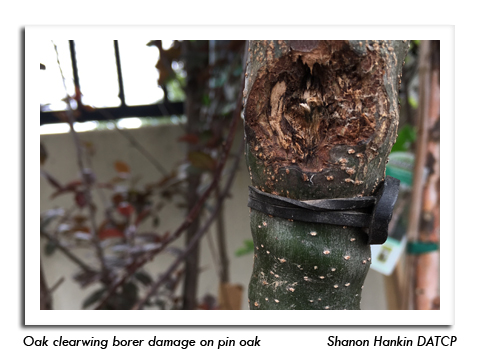
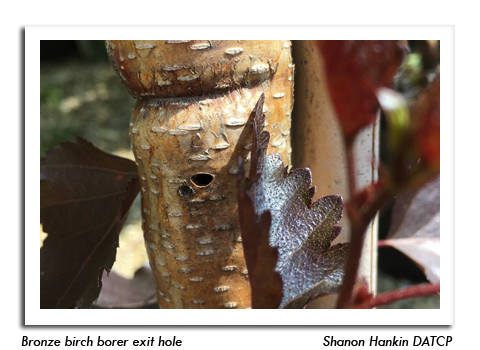
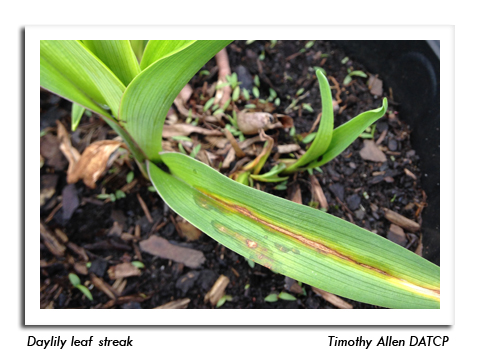
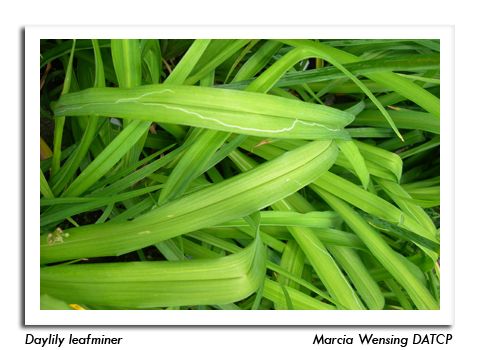
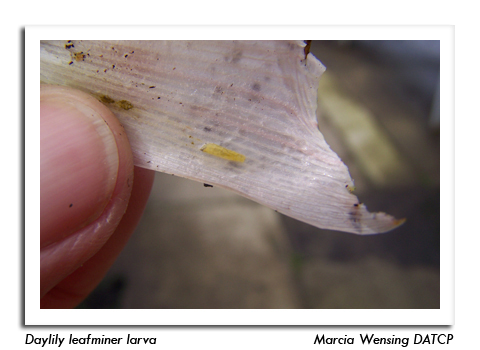
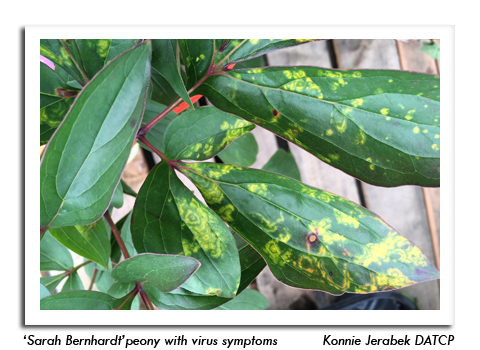
|
|
|